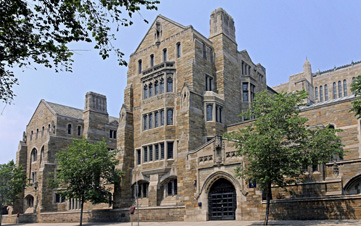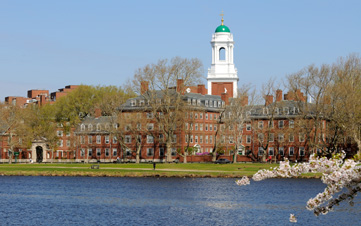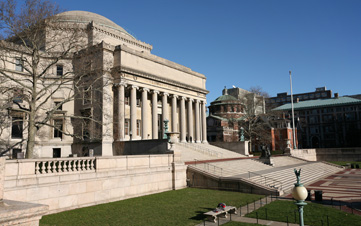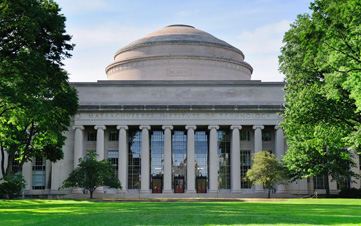10 Best Values in Private Universities, 2014


These top ten universities represent not only some of the most renowned institutions in the world but also our definition of value, thanks to their high-quality academics and generous financial aid.
All offer need-based aid that brings the price of admission, on average, to less than half the sticker price; three of the schools also award generous merit aid.
Unlike liberal arts colleges, which focus on undergraduate education, these and other universities offer a range of degrees, such as MAs, PhDs and JDs.

1. Yale University
- Location: New Haven, Conn.
- Undergraduate enrollment: 5,405
- Total annual cost: $58,550
- Average annual need-based aid: $43,115
- Average net cost: $15,435
Yale takes top honors in our list, thanks to its outstanding quality and lavish need-based financial aid. Yale's 7% admission rate is one of the most competitive in the country. Its $20.8 billion endowment allows the school to meet 100% of need for all students who qualify, at an average of about $43,000. The campus provides a variety of classic architecture, in styles ranging from Victorian Gothic and Moorish Revival to modern-day designs by Louis Kahn and Cesar Pelli. And Yale continues to expand. A $250 million gift in September will help add two new residential colleges to its current list of 12 and will enable the school to boost its enrollment by 15%.

2. Princeton University
- Location: Princeton, N.J.
- Undergraduate enrollment: 5,336
- Total annual cost: $56,395
- Average annual need-based aid: $35,664
- Average net cost: $20,731
This 267-year-old institution, the fourth-oldest in the country, is also one of the most competitive, with an admission rate of 8%. Its academic credentials include a six-to-one student-faculty ratio, a highly accomplished faculty and a brainiac student body (80% of incoming freshmen score 700 or more on their math SAT, and 76% score 700 or more on the verbal portion). Thanks to Princeton’s no-loan financial-aid policy -- the first in the country -- students at this Ivy League school keep borrowing to a minimum. The average debt at graduation ($5,096) among those who do borrow is the lowest among our top 100 private universities and top 100 liberal arts colleges.

3. Rice University
- Location: Houston, Tex.
- Undergraduate enrollment: 3,848
- Total annual cost: $52,741
- Average annual need-based aid: $31,820
- Average net cost: $20,921
Rice’s sticker price continues to be the lowest among our top 20 private universities, and its need-based aid reduces the cost for students who qualify to less than $21,000. Unlike many top-tier institutions, Rice also awards merit aid to a significant percentage of students, at an average of $12,000. Students here benefit from Rice's six-to-one student-faculty ratio, among the lowest for both liberal arts colleges and private universities. Students clearly enjoy their experience at Rice: 96% of freshmen return for sophomore year.

4. Harvard University
- Location: Cambridge, Mass.
- Undergraduate enrollment: 6,658
- Total annual cost: $57,497
- Average annual need-based aid: $40,950
- Average net cost: $16,547
The oldest institution of higher education in the country, Harvard maintains its reputation as the most competitive on our list, with an admission rate of 6% and a yield -- the number of students who attend out of those admitted -- of 80%, besting that of its Ivy League peers. Harvard's financial aid (totaling $182 million) is awarded to 63% of its students.

5. Duke University
- Location: Durham, N.C.
- Undergraduate enrollment: 6,655
- Total annual cost: $59,578
- Average annual need-based aid: $37,507
- Average net cost: $22,071
This famed research university, located on nearly 9,000 acres in Durham, N.C., is conveniently situated near the renowned Research Triangle Park, where students get practical knowledge in the fields of medicine, engineering and environmental studies. Duke’s academic standards are stellar, and its financial aid is generous: After need-based aid, the average price drops 63%, to $22,071. The seven-to-one student-faculty ratio means students have plenty of opportunity to interact with professors, who are also top researchers in their fields.

6. Columbia University
- Location: New York, N.Y.
- Undergraduate enrollment: 6,068
- Total annual cost: $62,807
- Average annual need-based aid: $41,207
- Average net cost: $21,600
This Ivy League institution, located in Manhattan's Morningside Heights, has the highest graduation rates on our top ten list (91% graduate in four years, and 95% graduate in five years). It’s also the most expensive. But its need-based financial aid allows students who qualify to get a top-notch education at about one-third of the sticker price, on average. Virtually all freshman students return for their sophomore year. Columbia also makes the grade for having strong academic support (the student-faculty ratio is six-to-one) and a competitive admission rate of 7%.

7. Stanford University
- Location: Stanford, Cal.
- Undergraduate enrollment: 7,063
- Total annual cost: $57,911
- Average annual need-based aid: $39,897
- Average net cost: $18,014
Situated between San Jose and San Francisco in Silicon Valley, Stanford has established itself as a top research university with a strong entrepreneurial culture. It’s one of the most competitive on our top ten list (along with Yale, Harvard and Columbia), with an admit rate of 7%. The low student-faculty ratio (five-to-one) ensures that students get personalized instruction from its faculty, and 98% of freshmen return for sophomore year.

8. Massachusetts Institute of Technology (MIT)
- Location: Cambridge, Mass.
- Undergraduate enrollment: 4,503
- Total annual cost: $57,242
- Average annual need-based aid: $35,993
- Average net cost: $21,249
With 14 Nobel laureates, 22 MacArthur Fellows and four Pulitzer Prize winners currently among the faculty, MIT is world-renowned as the training ground for the scientific elite. As you would expect, 94% of incoming freshmen scored 700 or higher on the math SAT, and the admit rate is a competitive 9% (the lower the number, the better). MIT’s mascot is the beaver (as is Caltech’s), regarded as nature’s engineer, and students at both schools stay as busy as one.

9. California Institute of Technology (Caltech)
- Location: Pasadena, Cal.
- Undergraduate enrollment: 997
- Total annual cost: $55,368
- Average annual need-based aid: $34,831
- Average net cost: $20,537
Recognized for its top-flight astrophysics and engineering programs (it operates NASA’s Jet Propulsion Laboratory), this preeminent tech school makes our top ten for its smart student body (99% of incoming freshmen scored 700 or higher on their math SAT), its three-to-one student-faculty ratio and its low student debt on graduation ($15,090 among students who borrow). Known for its accomplished faculty, which includes 32 Nobel laureates, Caltech is less known for its role as a certified olive-oil distributor. The school has hosted olive festivals each fall since 2007, collecting as much as 2,600 pounds of olives from the trees lining Olive Walk.

10. University of Pennsylvania
- Location: Philadelphia, Pa.
- Undergraduate enrollment: 9,682
- Total annual cost: $60,002
- Average annual need-based aid: $36,048
- Average net cost: $23,954
Inspired by founder Benjamin Franklin’s words -- “an inclination…to serve mankind” -- this Ivy League institution has received national recognition for being a leader in encouraging its students to participate in community service. Strong academics, including a student-faculty ratio of six-to-one, and hefty need-based financial aid give students two good reasons to stick around: 98% of freshmen return for their sophomore year.

Get Kiplinger Today newsletter — free
Profit and prosper with the best of Kiplinger's advice on investing, taxes, retirement, personal finance and much more. Delivered daily. Enter your email in the box and click Sign Me Up.

-
 Fired Up By the Masters and RBC Heritage? See These Homes for Sale By Golf Courses
Fired Up By the Masters and RBC Heritage? See These Homes for Sale By Golf CoursesFive homes for sale near golf courses, for people who can't get enough of the tour.
By Alexandra Svokos
-
 The Economic Impact of the US-China Trade War
The Economic Impact of the US-China Trade WarThe Letter The US-China trade war will impact US consumers and business. The decoupling process could be messy.
By David Payne
-
 What to Do With Your Tax Refund: 6 Ways to Bring Growth
What to Do With Your Tax Refund: 6 Ways to Bring GrowthUse your 2024 tax refund to boost short-term or long-term financial goals by putting it in one of these six places.
By Rachael Green
-
 What Does Medicare Not Cover? Eight Things You Should Know
What Does Medicare Not Cover? Eight Things You Should KnowHealthy Living on a Budget Medicare Part A and Part B leave gaps in your healthcare coverage. But Medicare Advantage has problems, too.
By Donna LeValley
-
 15 Reasons You'll Regret an RV in Retirement
15 Reasons You'll Regret an RV in RetirementMaking Your Money Last Here's why you might regret an RV in retirement. RV-savvy retirees talk about the downsides of spending retirement in a motorhome, travel trailer, fifth wheel or other recreational vehicle.
By Bob Niedt
-
 The Six Best Places to Retire in New England
The Six Best Places to Retire in New Englandplaces to live Thinking about a move to New England for retirement? Here are the best places to land for quality of life, affordability and other criteria.
By Stacy Rapacon
-
 The 10 Cheapest Countries to Visit
The 10 Cheapest Countries to VisitWe find the 10 cheapest countries to visit around the world. Forget inflation woes, and set your sights on your next vacation.
By Quincy Williamson
-
 15 Ways to Prepare Your Home for Winter
15 Ways to Prepare Your Home for Winterhome There are many ways to prepare your home for winter, which will help keep you safe and warm and save on housing and utility costs.
By Donna LeValley
-
 Six Steps to Get Lower Car Insurance Rates
Six Steps to Get Lower Car Insurance Ratesinsurance Shopping around for auto insurance may not be your idea of fun, but comparing prices for a new policy every few years — or even more often — can pay off big.
By Donna LeValley
-
 How to Increase Credit Scores — Fast
How to Increase Credit Scores — FastHow to increase credit scores quickly, starting with paying down your credit card debt.
By Lisa Gerstner
